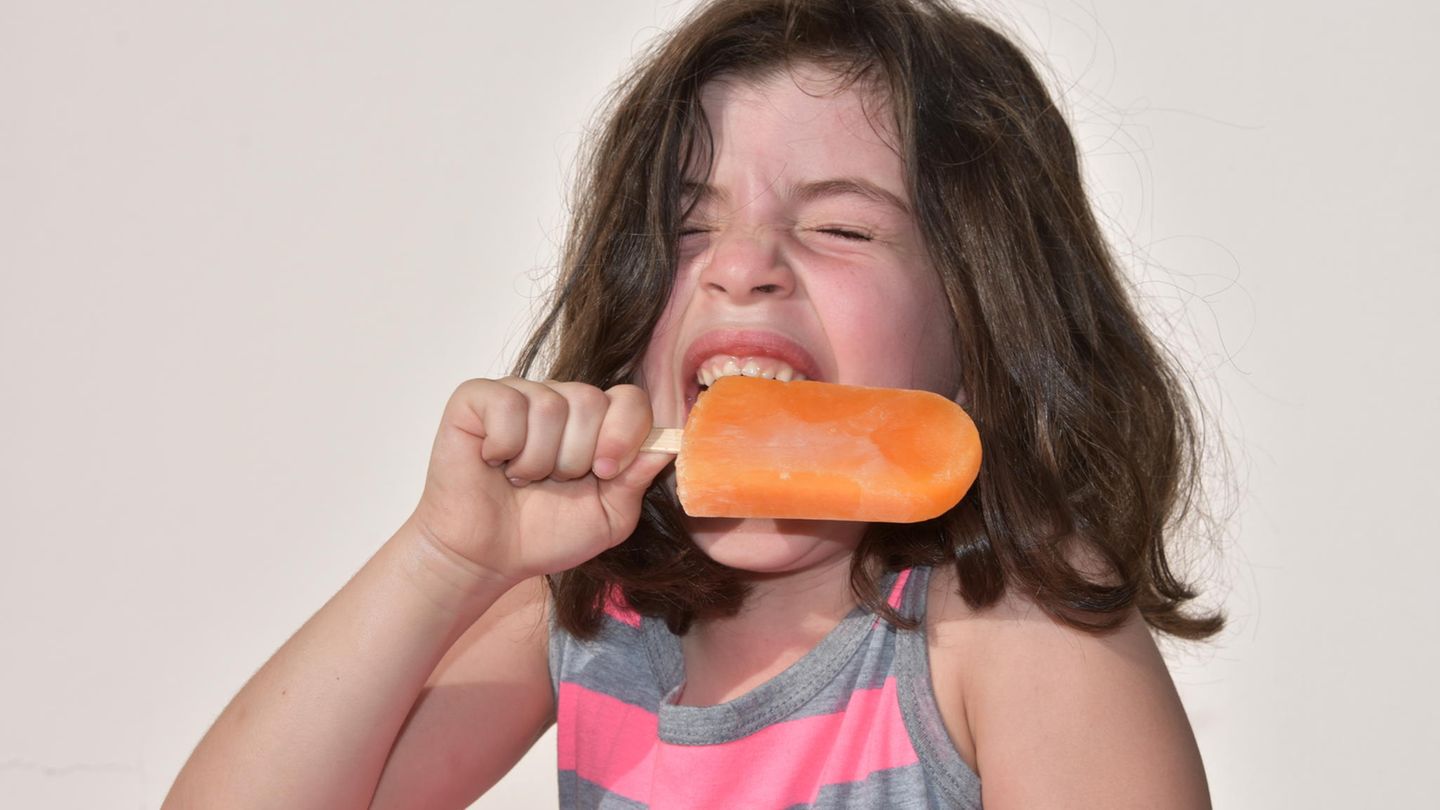Good to know
Why we get brain freezes from cold foods and drinks
The ice cream is delicious, but a third of people have experienced brain freezes.
© tzahiV/ / Getty Images
Stinging and sudden pain in the head after drinking an ice-cold Coke or eating an ice cream cone. What causes cold headaches and how to avoid them.
On a sunny day, a cold ice cream is a real treat. But the mood is quickly clouded when suddenly a sharp pain shoots into the head. Almost everyone will have experienced this phenomenon themselves. It is known under the names “(Ge)hirnfrost”, “Brain Freeze”, “Ice Cream Headache” or just cold headache. But how does such a headache arise?
The everyday phenomenon that is scientifically known as Sphenopalatine Ganglioneuralgia is known, researchers have also dedicated themselves. Canadian scientists assume that around a third of people are likely to be familiar with cold headaches. In 2002, the researchers had 145 students at Dalewood Middle School in Hamilton take part in an experiment.
A third of people know brain freeze
The children were allowed to eat ice cream six times. One group had to eat 100 milliliters of ice cream in under five seconds. The second group, on the other hand, was allowed more time to eat the same amount of ice cream. The result: Almost 30 percent of the fast ice cream eaters got cold headaches. In half of the children, however, the pain disappeared in less than ten seconds. The “Ice Cream Headache” occurred much less frequently among the students who had eaten the ice cream more slowly – only 17 percent complained about it. However, the cause of the cold headache was not investigated in this experiment.
Research is still divided as to why headaches are caused by cold food or drinks that we consume. In a very small study, scientists from the USA and Ireland identified a cause. The sudden headache appears to be triggered by an abrupt increase in blood flow in the anterior cerebral artery, the study said. When the artery contracted again, the pain in the subjects subsided. For the study, the researchers had 13 healthy adults drink ice water, while the blood flow in the participants’ brains was monitored. As a control, the subjects later had to drink room-warm water.
The scientists suspect a kind of self-defense reflex behind the reaction. “The brain is one of the most important organs in the body and it’s very sensitive to temperature,” says Harvard Medical School neurologist Jorge Serrador, who led the study. “By expanding the blood vessels, warm blood flows into the tissue. This is how the body ensures that the brain does not get too cold.” The sudden influx of blood can increase the pressure and thus trigger the pain, the researcher explains. With the study, the scientists wanted to find out how migraine attacks are triggered in the brain or what happens in the brain with other types of headache. Because previous studies show that migraine sufferers are more likely to suffer from “brain freeze”. Both headaches can occur in the forehead and result in throbbing pain.
Cold headaches are easily preventable
Unlike migraines, cold headaches are not serious. They usually disappear within a few seconds or last a few minutes at most. Wojtek Mydlarz is an assistant professor of ear, nose and throat medicine and head and neck surgery at Johns Hopkins in Baltimore. He says, “The temperature of the palate drops quite a bit when we eat or drink a large amount of very cold food or liquid. A survival reflex kicks in and the body tries to maintain its core temperature.” According to Wojtek Mydlarz, cold headaches are an example of “transferred pain”. In the palate area, the tiny muscles around the blood vessels contract and relax, but the sensation is felt higher up in the head.
If you want to avoid the stinging pain, eat ice cream slowly. It is also helpful to take small bites or sips of something cold. Before swallowing, they should be warmed up in the mouth. Anyone who gets “Brain Freeze” can try to increase the temperature in the mouth and on the palate again. For example, by stopping to eat the ice cream or drinking water at room temperature. Another way to rewarm the palate is to press your tongue or thumb against the palate.
Read more:
– Why do many women grow hair on their chins as they age?
– Why coffee drives us to the toilet
– Why women also grow dark brush hair
Sources:Study Canada, Notice of the study, John Hopkins, Cleveland Clinic



